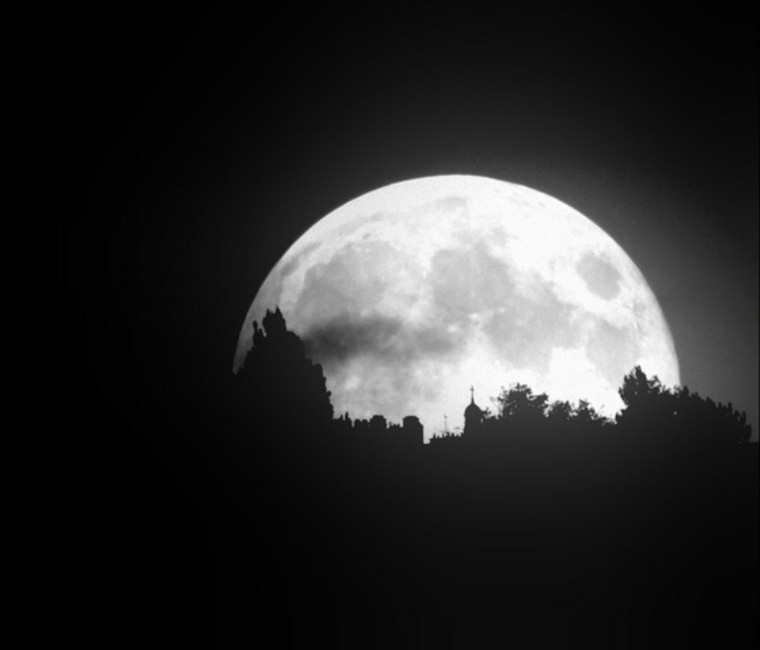When the full moon rises Tuesday night, it will technically be a Blue Moon, but not for the reason you might think.
The Blue Moon tonight is not the second full moon of August, but actually gets its name from a relatively obscure rule of astronomy. And there are a few other details about the full moon that might surprise you.
So to celebrate the Blue Moon, here are five amazing facts about this month's full moon:
1) It's not really blue: OK, so not really a newsflash, but the Blue Moon's name actually has nothing to do with color. Occasionally, the full moon can take on a reddish pallor, but today's full moon is not related to the actual color of Earth's cosmic neighbor. The moon can appear blue in color if a forest fire or volcanic eruption litters the upper atmosphere with ash or smoke. A volcanic eruption gave the moon a bluish tint from the perspective of many people on Earth in 1991. [Blue Moon Explained (Infographic)]
2) There are two definitions for Blue Moon: The term Blue Moon was originally assigned to the third full moon in a four moon season, but after a mix-up in Sky & Telescope magazine in 1943, the term took on a different meaning. An article in the magazine incorrectly defined a blue moon as the second full moon in a single month, but the definition stuck. This particular blue moon is a technical Blue Moon, but does not meet the criteria for the second definition. The third full moon in a four-full-moon season rule was detailed in a 1937 edition of the now defunct Maine Farmers' Almanac.
3) The Blue Moon has many names: Today's full moon is also known as the Full Sturgeon Moon, the Green Corn Moon, the Grain Moon and the Full Red Moon. Each of August full moon names comes from monikers given to the full moons of a certain month according to Native American and European traditions.
4) It's only full for a moment: Although the moon usually looks full one day before and one day after the day of the full moon, there is technically only one moment when the moon is full in the sky. Tuesday night, the moon turns full at 9:45 p.m. EDT, and (weather and light permitting) the moon will be in view for people along the eastern coast of the United States.
5) It's kind of a rare sight: Blue Moons occur somewhat infrequently. After today's full moon, another Blue Moon will not occur again until 2015. The idiom "once in a Blue Moon" signifies a rare event because scientists had trouble predicting when the distinctive full moon would happen during any given year.
Editor's note: If you have an amazing photo of the August full moon, or any other night sky sight, and you'd like to share it for a possible story or image gallery, please contact Managing Editor Tariq Malik at spacephotos@space.com.
Follow Miriam Kramer @mirikramer and Google+. Follow us @Spacedotcom, Facebook and Google+. Original article on Space.com.
- Moon Master: An Easy Quiz for Lunatics
- Full Moon: Why Does It Happen? How Does It Affect Us? | Video
- Supermoon Photos: Biggest Full Moon of 2013 in Pictures
